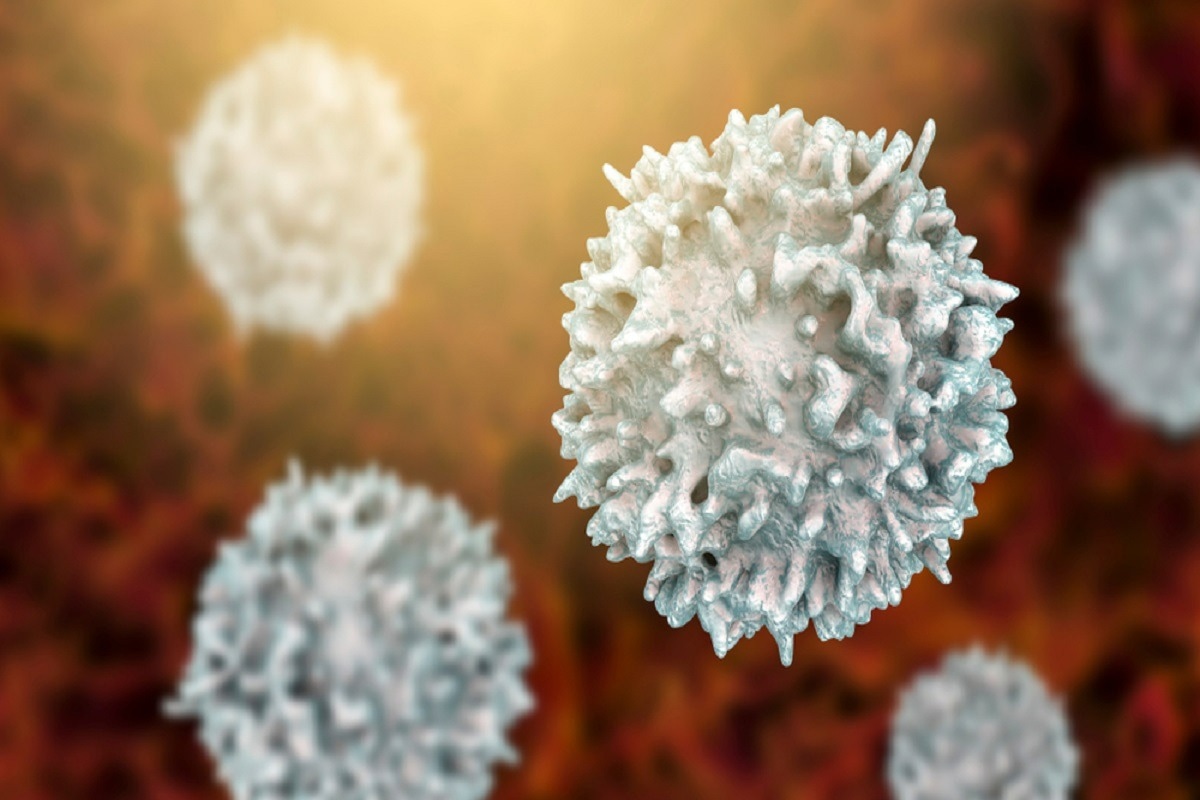In a recent study posted to the bioRxiv* preprint server, researchers analyzed temporal changes in polyclonal cluster of differentiation 4 (CD4) T-lymphocyte dynamics upon immunization against severe acute respiratory syndrome coronavirus 2 (SARS-CoV-2) spike (S) protein in vivo.
 Study: Temporal profiling of CD4 T-cell activation and differentiation upon SARS-CoV-2 spike protein immunisation. Image Credit: Kateryna Kon/Shutterstock
Study: Temporal profiling of CD4 T-cell activation and differentiation upon SARS-CoV-2 spike protein immunisation. Image Credit: Kateryna Kon/Shutterstock

 *Important notice: bioRxiv publishes preliminary scientific reports that are not peer-reviewed and, therefore, should not be regarded as conclusive, guide clinical practice/health-related behavior, or treated as established information.
*Important notice: bioRxiv publishes preliminary scientific reports that are not peer-reviewed and, therefore, should not be regarded as conclusive, guide clinical practice/health-related behavior, or treated as established information.
Background
Studies have reported that T-cell receptor (TCR) signaling is required to activate and differentiate CD4 T-lymphocytes. However, the in vivo TCR signaling-mediated differentiation of CD4 T-lymphocytes on recognition of the SARS-CoV-2 S antigen at the single cell level has not been well characterized.
About the study
In the present study, researchers assessed changes in CD4 T-lymphocyte temporal dynamics (activation and differentiation) by evaluating T-lymphocyte responses to SARS-CoV-2 S using Foxp3-Tocky mice and Nr4a3-Tocky (Timer-of-cell-kinetics-and-activity) mice.
T-lymphocyte responses to SARS-CoV-2 S1a, S1b, S2a, and S2b fragments were evaluated using Nr4a3-Tocky mice by analyzing the draining lymph node (DLN) cells using flow cytometry (FC). S1a contained the N-terminal domain (NTD); S1b contained the receptor binding domain (RBD); S2a contained fusion peptides, and S2b contained heptapeptide repeat (HR) sequences 1 and 2. Ex-vivo FC analysis was performed to assess the impact of S1a immunization on CD4 T-lymphocyte dynamics, and the alterations in antigen-reactive T-lymphocyte composition were evaluated using Nr4a3-Tocky mice.
Timer fluorescence data from Nr4a3-Tocky mice were analyzed quantitatively by converting blue and red fluorescence data to timer angle and intensity, respectively. The induction of novel T-lymphocyte populations by S1a immunization was studied using uniform manifold approximation and projection (UMAP) analysis and principal component analysis (PCA). The impact of two S1a immunizations (initial and booster doses) on S1a-reactive T-lymphocyte differentiation was assessed in vivo.
The programmed cell death protein 1 (PD-1) hi C-X-C chemokine receptor type 5 positive (CXCR5+) fraction of S1b-reactive T-lymphocytes was explored, and UMAP analysis of Nr4a3-Timer+ regulatory T-lymphocytes (Tregs) was performed. Foxp3 transcriptional dynamics in response to S1b immunization were analyzed using Foxp3-Tocky mice. To investigate whether S1b-reactive Treg cells were enriched with pre-existing thymic Tregs, tamoxifen was administered to Foxp3EGFP-cre-ERT2 R26R-EYFP mice (referred to as Foxp3-Tocky::Foxp3 fate-mapping mice) who were immunized with S1b.
Results
S1a and S2a induced PD1hiCXCR5+ T follicular helper (Tfh) lymphocyte differentiation, whereas S1b induced CD25hiGITRhiPD-1int Tregs that received intermittent TCR signals. S1b-reactive Tregs sustained Foxp3 transcription over time, indicative of activated Tregs. Foxp3 fate-mapping showed that S1b-reactive Tregs were not derived from thymic Treg. Blue fluorescence was observed in CD4 T-lymphocytes of mice immunized with S1a, S1b, and S2b but not S2a.
The ex-vivo analysis showed no changes in timer+ and Foxp3+ CD4 T-lymphocyte proportions after S1a immunization, indicative of the rarity of S1a-reactive T-lymphocytes. S1a immunization increased PD-1 hi CXCR5+ conventional T-lymphocyte (Tconv) counts and Tfh frequency in the new locus, whereas timer+ lymphocyte proportions in PD-1hiCXCR5+ Tconv lymphocytes and timer intensity reduced in the arrested locus and persistent-to-arrested transition (PAt) locus.
The UMAP analysis showed partially overlapped low-angle CD25hiCD69hi T-lymphocytes without substantial changes in Foxp3+ Treg counts. Besides Tfh cells, S1a-reactive T-lymphocytes did not show differentiation within one week of the initial SARS-CoV-2 S immunization. In the in vivo analysis, S1a booster elevated PD-1hi CXCR5+ Tfh cell counts but not the timer+ CD4 T-lymphocyte proportions.
Nine Tconv lymphocyte clusters, with substantial increases in Tconv counts in clusters 4 and 6 and slight cluster 9 Tconv lymphocytes by S1a booster immunization. Cluster 4 Tconv lymphocytes demonstrated blue fluorescence, indicating significant enrichment of S1a-targeted T-lymphocytes, and several lymphocytes of cluster 4 (43%) were found in the new locus. Contrastingly, cluster 6 and cluster 9 Tconv lymphocytes were found in the arrested locus and PAt locus with high CD44 expression.
Booster immunization elevated cluster 4 blue+ PD-1lo CXCR5- CD44int Tconv and cluster 6 red+ PD-1hi CXCR5+ Tfh counts. S1a booster also enabled SARS-CoV-2 S-reactive T-lymphocyte differentiation into mature Tfh lymphocytes (cluster 6) via transitional T-lymphocytes (cluster 4 and cluster 9). Timer+ and Foxp3+ CD4 T-lymphocyte proportions moderately increased.
S1b immunization increased cluster 3 red+ CD25hi GITRhi PD-1int lymphocytes in the PAt locus and Tregs in the Foxp3-Persistent locus but reduced those in the arrested loci, indicative of Foxp3 transcription activation in Foxp3-Tocky+ Tregs by S1b immunization. The S1b reactive Tregs were enriched in antigen-reactive CD25hi GITRhi PD-1int T-lymphocytes, indicative of CD25 and glucocorticoid-induced TNFR-Related (GITR) upregulation by sustained Foxp3 transcription. However, yellow fluorescent protein (YFP)-expressing Treg counts and Foxp3-Timer+ lymphocytes in YFP+ cells were unaltered.
Similar findings were observed in the Nr4a3-Tocky and Foxp3-Tocky. S2a immunization did not alter Timer+ Tconv or Treg proportions, indicative of poor S2a immunogenicity. S2b immunization did not alter the antigen-reactive Tconv cell populations but increased PD-1hi CXCR5+ Tfh lymphocytes and demonstrated enrichment of cluster 1 lymphocytes in PAt locus with CD44hi PD-1hi CXCR5hi expression.
Conclusion
Overall, the study findings highlighted the temporal dynamics of CD4 T-lymphocyte and Treg differentiation in the TCR repertoire of polyclonal T-lymphocytes on SARS-CoV-2 S immunization.

 *Important notice: bioRxiv publishes preliminary scientific reports that are not peer-reviewed and, therefore, should not be regarded as conclusive, guide clinical practice/health-related behavior, or treated as established information.
*Important notice: bioRxiv publishes preliminary scientific reports that are not peer-reviewed and, therefore, should not be regarded as conclusive, guide clinical practice/health-related behavior, or treated as established information.